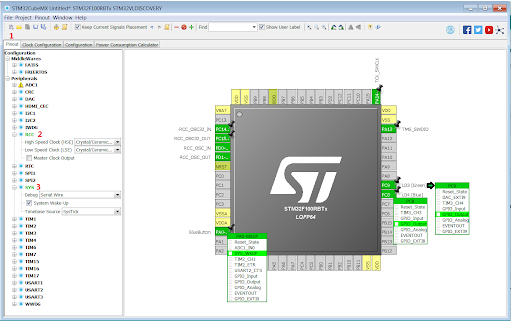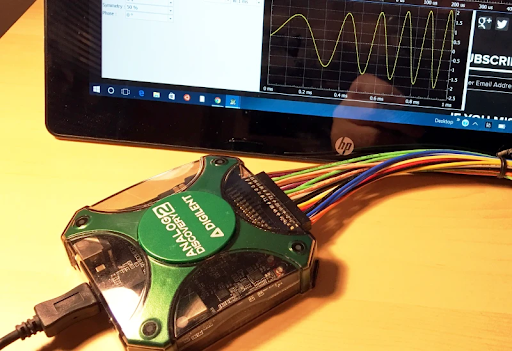I think early on in my career I came off as a much better hardware engineer than I actually was because I could leverage a lot of digital tools to gain confidence in designs before going to production. I usually simulated even relatively simple designs that experienced engineers would never consider simulating – running monte-carlo temperature or component tolerance sweeps. If there were critical components of the designs, I knew how to quickly program a test jig to get me real-world results. I could take results to Sr. Engineers or management and prove a new design concept.
The Analog Discovery 2 was a dream come true for me when it came out! You could configure oodles of digital IO and analog I/O scope ports. On the back end was a really powerful Python scripting language. Now I could put together tests on my desktop with a single interface!
The other tool that became immensely useful for starting out projects was Cube MX Studio. It could generate template firmware code from GUI configuration. It was really next level in terms of learning what options I had on a given chip without having to map out 30 pages of registers in the spec sheet.

Once I left the big company for the startup world I had a chance to really explore the space of digital augmentation for our hardware team. I was a bit naïve in thinking that there were all these tools out there we could piece together. We found that the space was really lacking something that could give us a performance advantage as a team. We were able to use GitHub as a lightweight revision control management system and work closely with firmware to build automated test jigs. These would stress-test new versions of code (on physical hardware) each time we pushed a new revision.
What are some task automation tools? (i.e. printing vs. casting, manufacturing approach)
Simulation and collaboration tools that exist now can really help accelerate design time to market. In electronics, connecting your workflow to supply chain data can be incredibly helpful in avoiding hiccups when you go to manufacture. There are a lot of ways to hack together scripts to call to open APIs – for example, Octopart (now Nexar), Supply Frame, Silicon Experts, and others. Ultimately, I started AllSpice in part to make it easier to include checks like these in design reviews.
How can those features help tie design to manufacturing materials?
One of the biggest examples of this in speaking to the engineering community has been the shift from in-person design reviews to digital.
It may be more of a challenge to connect with certain colleagues who can add a lot of value to the design review process. Despite hardware being interdisciplinary by nature, many teams often remained siloed. Digital design reviews provide visibility into these silos and bring teams closer together.
We’ve all been there when a prototype board arrives from the factory, and it doesn’t work. First, there’s a last-minute change to replace an out-of-stock component, but then the notification falls through the cracks of your teammate’s inbox. Catching the change on time would have saved that additional $10k in prototypes and over a month of work re-spinning a board.
By collaboratively going through a full design review cycle, ordering, and testing, the odds of wasted cost and time decrease when a project’s success is no longer reliant on a single email falling through the cracks.
Will there be a greater focus on task automation in the design process?
Yes. Engineers are seeking ways to capture everything in real-time; each issue that arises can be worked on in smaller pieces. Instead of spending 2 weeks every 2 months on paperwork alone, they want a process where they’re spending an average of 2 extra minutes each day so they can get back those two weeks on the actual design portion.
Many engineers prefer this over having to resolve a massive amount of tickets that have built up over the previous several months. This also allows for continuous testing and feedback instead of a hastened design review at the end.



